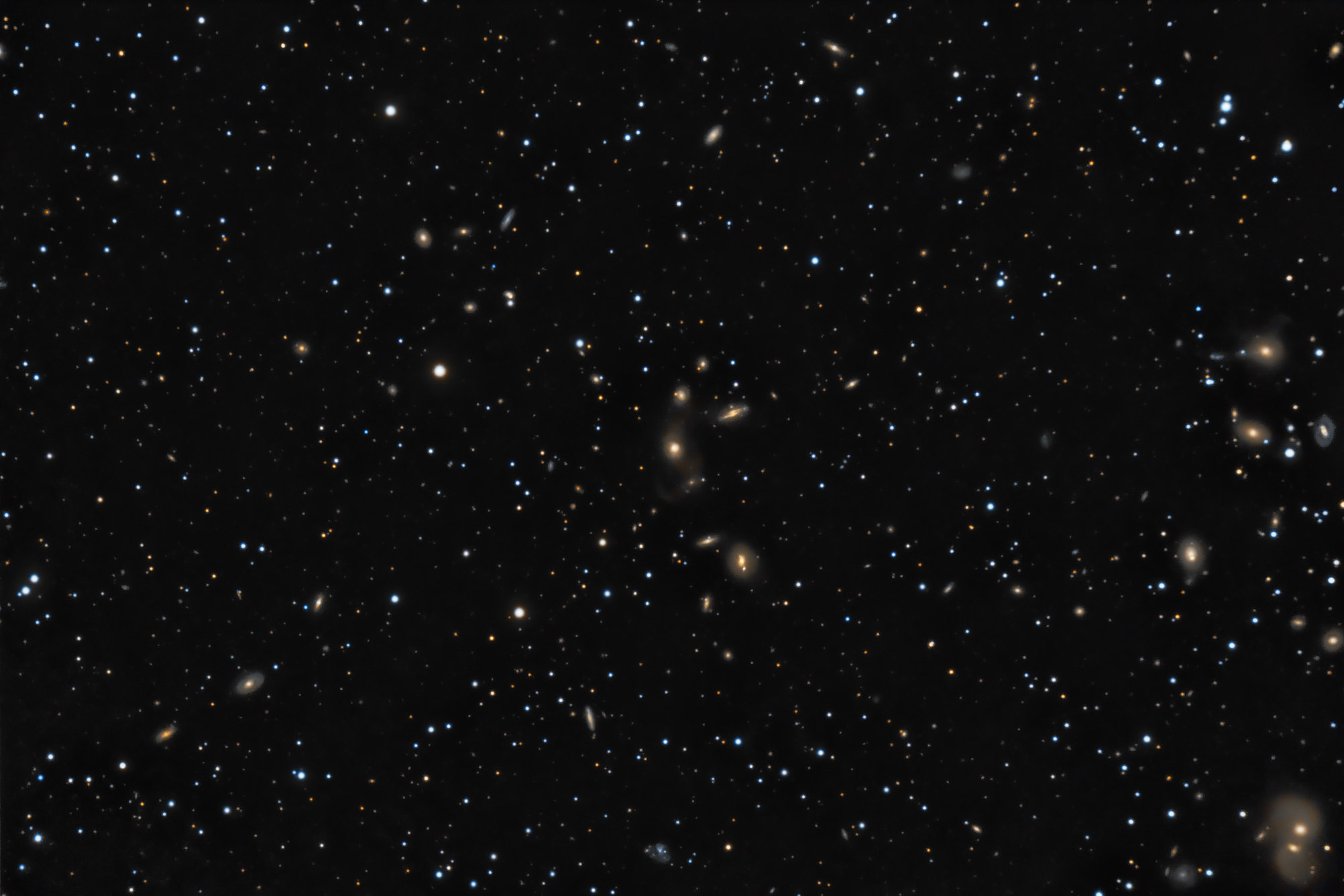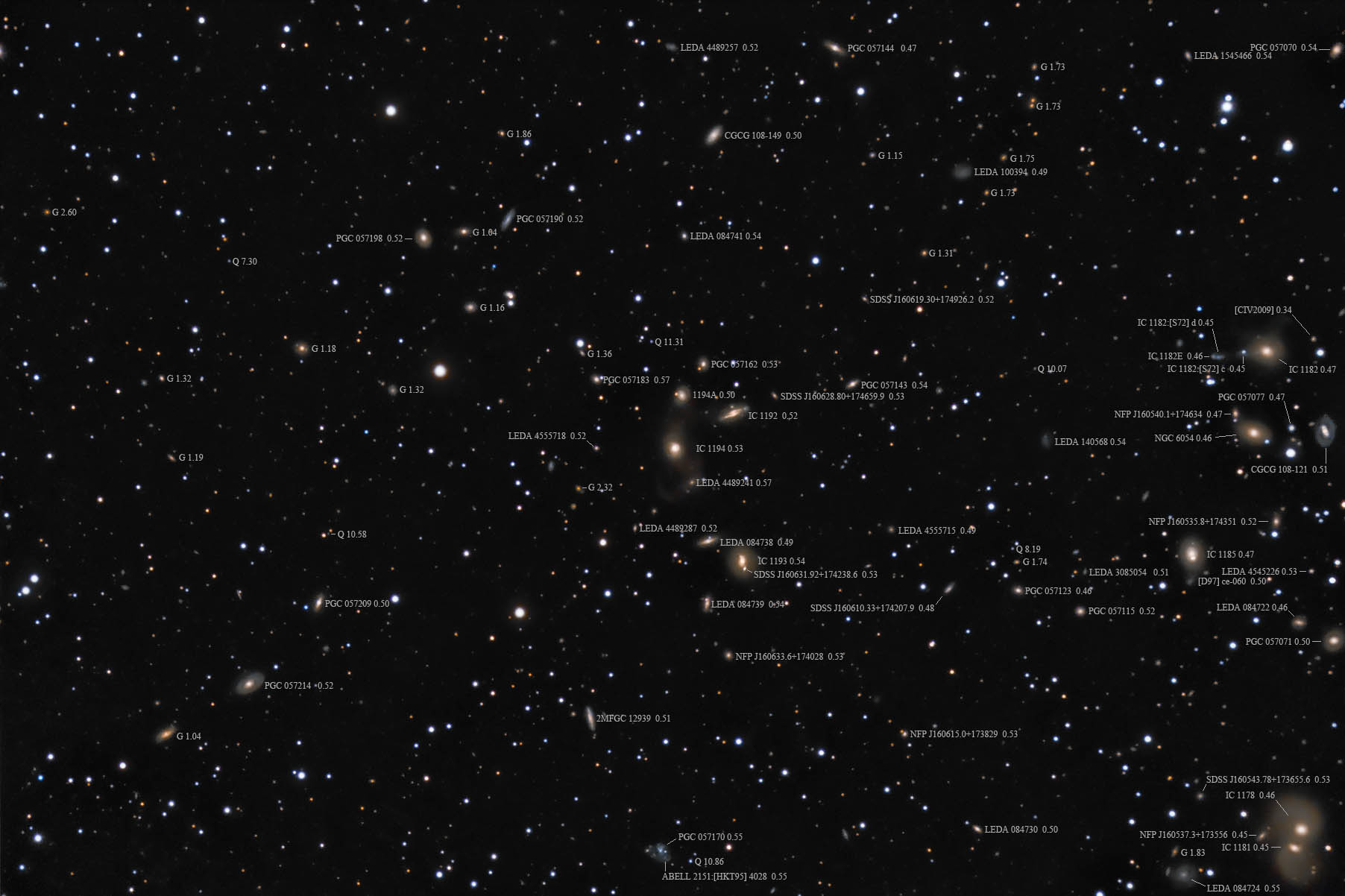| Description | Images |
Object name: IC1192Designation(s): IC1192, IC1193, IC1194, IC 1194 is a member of the Hercules Galaxy Cluster on its eastern edge. I missed picking it up when I imaged the heart of the cluster due to my FOV being too small. Like several other members of the cluster, including some on the western edge of this image, it has large plumes apparently due to interaction with other members of the cluster. NED classifies it as SA(s)0+ pec. While the bright region of the galaxy is pretty average in size at 60,000 light-years in diameter its plumes extend its diameter to 385,000 light-years at its assumed distance of 530 million light-years. IC 1182 on the western edge of my image has a smaller plume. Its bright diameter is much larger than IC 1194 at a bit over 100,000 light-years at its redshift distance of 470 million light-years. With the plumes (mostly to the north) its size grows to 225,000 light-years. The brightest plumes belong to Arp 172 (IC 1178 and IC 1181) in the lower right corner. At their redshift distance, the plums extend to about 285,000 light-years. At least in the case of Arp 172, we know the plumes are caused by the interaction of the two galaxies. What caused the plumes in the case of IC 1194 and IC 1182 is more difficult to determine. I found nothing in the literature to help. They may be due to a long ago merger with another galaxy. All three were discovered by Stephane Javelle on August 13, 1892. Related Designation(s):2MASS J16063220+1742498, 2MASS J16063934+1745402, 2MASX J16063222+1742501, 2MASX J16063935+1745401, 2MASXi J1606321+174249, 2MASXi J1606393+174540, ABELL 2151:[BO85] 011, ABELL 2151:[BO85] 023, ABELL 2151:[BO85] 033, ABELL 2151:[CBW93] G, ABELL 2151:[CBW93] H, ABELL 2151:[D80] 056, ABELL 2151:[D80] 072, ABELL 2151:[D80] 074, ABELL 2151:[FBD2002] j01, ABELL 2151:[MGT95] 168, ABELL 2151:[MGT95] 169, ABELL 2151:[MGT95] 175, ABELL 2151:[SS78a] 38, AGC 260226, ASK 563676.0, ASK 563712.0, CAN 058 NED07, CAN 058 NED08, CGCG 108-152, CGCG 1604.4+1754, GIN 501, GIN 502, IC 1192, IC 1193, IC 1194, IC1192, IC1193, IC1194, MCG +03-41-128, NFP J160639.3+174540, NPM1G +17.0586, NSA 099455, PGC 057155, PGC 057157, PGC 057172, SDSS J160632.19+174249.9, SDSS J160632.20+174249.9, SDSS J160633.12+174632.4, SDSS J160633.13+174632.3, SDSS J160639.33+174540.2, SDSS J160639.34+174540.2, SDSS J160639.34+174540.3, SDSS J160639.35+174540.3, USGC U741 NED05, USGC U741 NED06, UZC J160633.2+174633, UZC J160639.3+174540, WBL 607-034, [DKP87] 160417.33+175050.5, [DKP87] 160418.28+175434.2, [DKP87] 160424.53+175338.0, [DZ2015] 637-01, [DZ2015] 637-02, [PJY2015] 587739720847065354 , [TTL2012] 294251, [TTL2012] 294656, |

